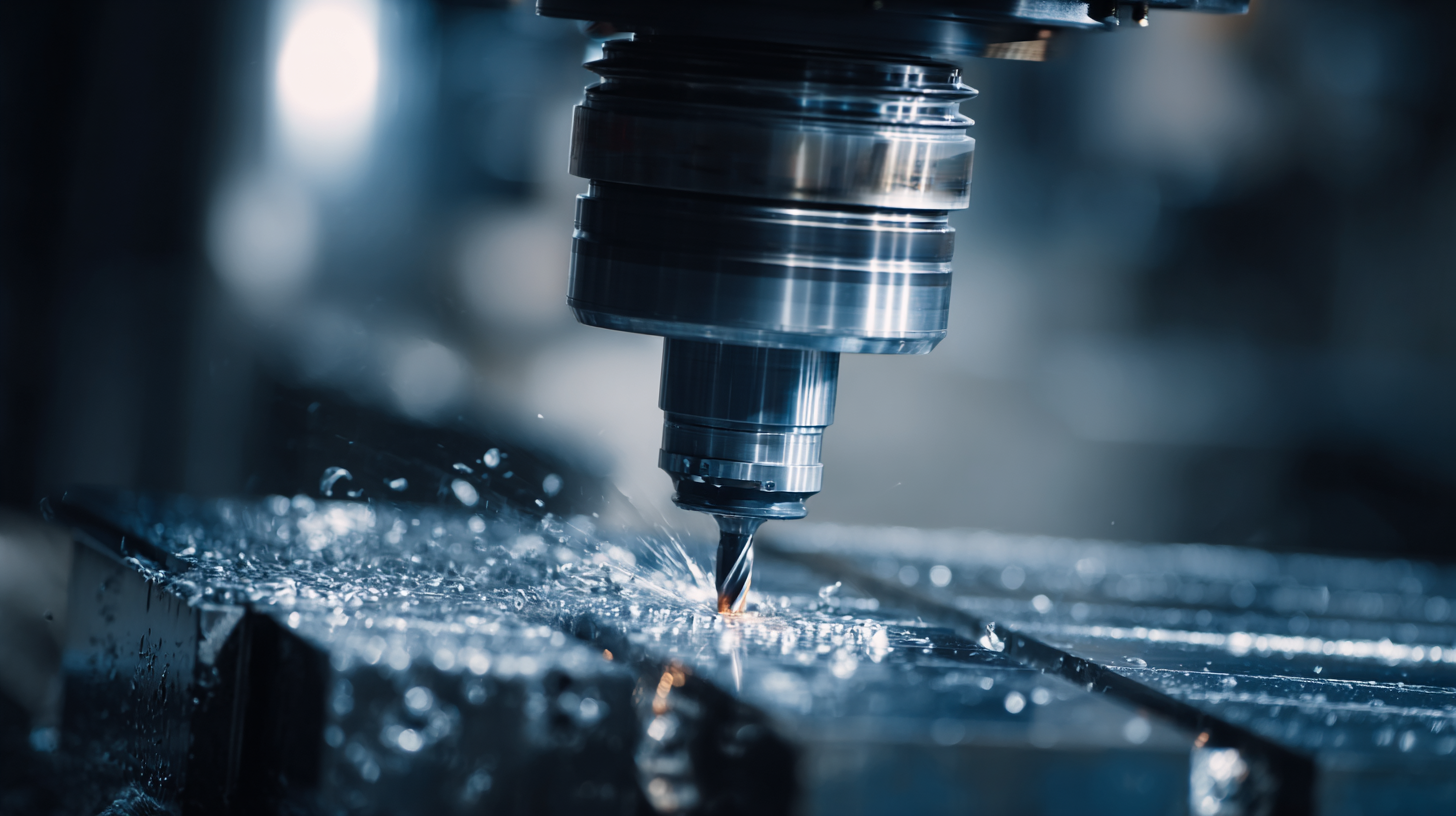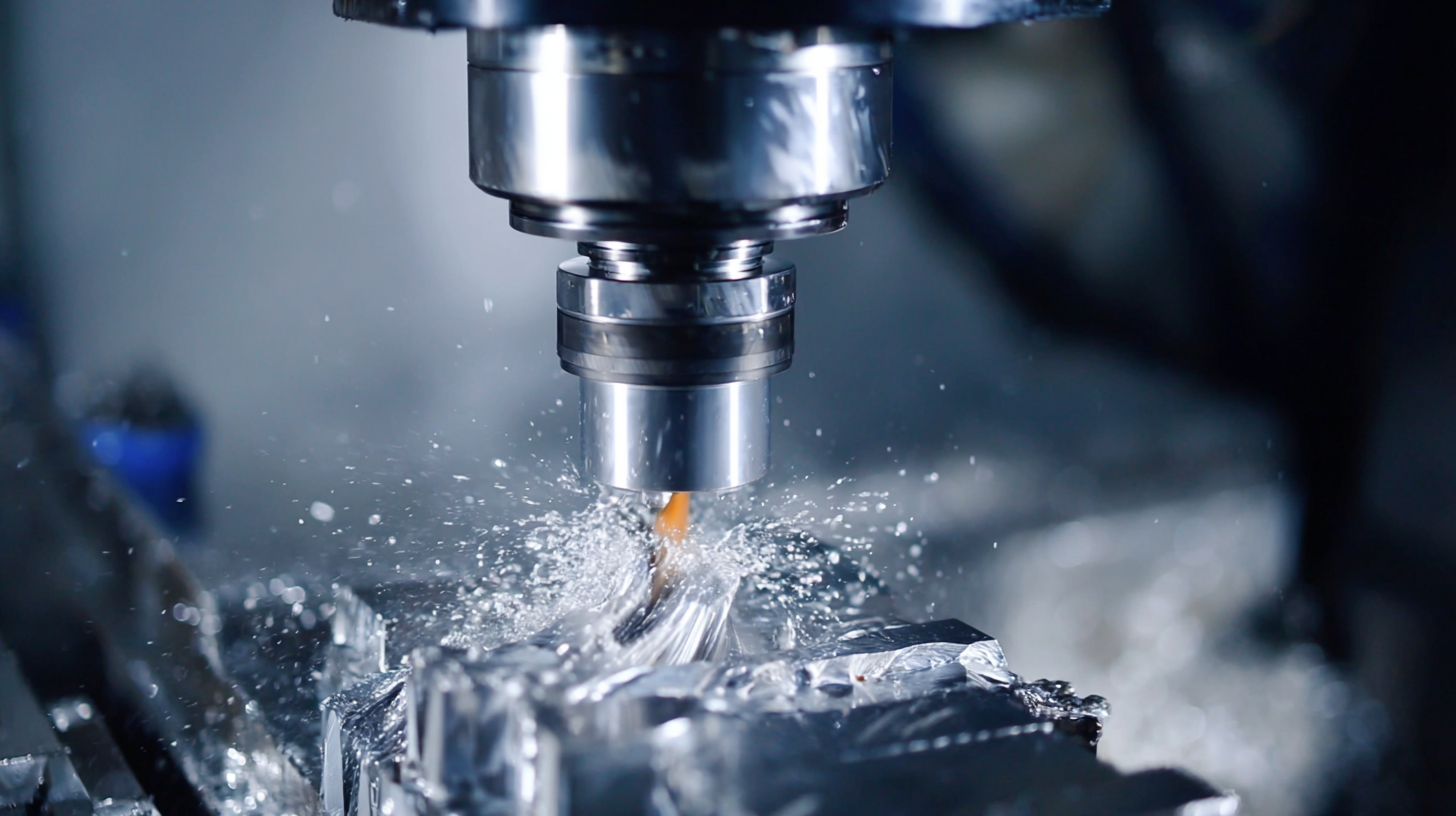Inquiry
Form loading...
-
Phone
-
E-mail
-
Whatsapp
In today's fast-paced industrial landscape, the demand for precision and efficiency in manufacturing has reached unprecedented heights. At the forefront of this revolution is the CNC milling machine, a pivotal technology that has transformed traditional machining processes into highly automated and accurate operations. This advanced equipment leverages computer numerical control to execute complex designs with remarkable precision, significantly reducing errors and enhancing productivity. As industries seek to streamline their operations, CNC milling machines offer unmatched versatility, catering to a wide range of materials and applications. In this article, we will explore the transformative impact of CNC milling machines on modern manufacturing, focusing on how they empower businesses to achieve higher operational standards while adapting to evolving market demands. Through this exploration, readers will gain insights into the critical role of CNC technology in shaping the future of manufacturing.

CNC milling machines are at the forefront of digital manufacturing technologies, playing a crucial role in modern manufacturing. These machines operate with remarkable precision, allowing manufacturers to produce intricate parts with a high degree of accuracy. The basic operation involves a computer-controlled cutting tool that removes material from a solid block, creating complex shapes and designs. This advanced technology not only enhances productivity but also reduces waste, making it a sustainable solution in various industries.
Tips for maximizing efficiency with CNC milling machines include ensuring regular maintenance to avoid downtime, investing in quality tooling to improve cut quality, and utilizing advanced programming software to optimize the machining process. Additionally, proper training for operators is essential, as skilled personnel can significantly enhance the machine's output and ensure consistent quality in production.
As the precision turned product manufacturing market continues to grow, the integration of CNC milling machines will be vital for companies aiming to stay competitive. Understanding the functionalities and capabilities of these machines is key for anyone looking to advance in the manufacturing sector, especially as the demand for precision components escalates. Equipping future professionals with these skills will not only benefit their careers but also the industries they serve.
| Dimension | Value |
|---|---|
| Max Speed (RPM) | 12000 |
| Workpiece Size (mm) | 500 x 300 x 300 |
| Material Compatibility | Aluminum, Steel, Plastic |
| Accuracy (mm) | 0.01 |
| Software Used | CAD/CAM |
| Main Applications | Aerospace, Automotive, Medical |
| Energy Consumption (kW) | 3.5 |
| Year of Introduction | 2000 |
CNC milling machines have transformed modern manufacturing by providing unmatched precision, efficiency, and versatility in production processes. Precision is one of the foremost advantages of CNC milling. These machines utilize computer numerical control (CNC) technology to achieve intricate designs and specifications that traditional machining methods cannot match. This high level of accuracy is essential in industries such as aerospace, automotive, and medical equipment, where even the slightest deviation can lead to significant issues.

Efficiency is another crucial benefit of CNC milling. These machines can operate continuously, significantly reducing production times while maintaining high standards of quality. Automated processes minimize the need for manual intervention, allowing manufacturers to produce complex parts at a faster rate. Moreover, CNC milling's ability to create multiple components from a single setup eliminates downtime between operations, streamlining workflows and enhancing productivity.
The versatility of CNC milling machines further contributes to their growing prominence in manufacturing. They can work with a wide range of materials, including metals, plastics, and composites, making them suitable for diverse applications. Additionally, the programmability of CNC milling allows for quick adjustments to be made for different projects, enabling manufacturers to easily adapt to changing demands and innovate new products with minimal lead time. This combination of precision, efficiency, and versatility positions CNC milling as a cornerstone of modern manufacturing practices.
Setting up a CNC milling machine for production is a crucial step in achieving precision and efficiency in modern manufacturing. The first step involves selecting the right machine based on the material and the complexity of the components you intend to produce. It’s important to familiarize yourself with the specific functions and capabilities of the CNC machine, including its software and tool compatibility. This ensures that you can maximize the machine's potential right from the start.
Once the machine is chosen, the next step is proper installation. Make sure the machine is placed on a stable surface, and check for any level adjustments needed. Proper alignment is critical, as even slight deviations can lead to inaccuracies in machining. After installation, calibrate the machine by running a test program. This will help identify any potential issues before starting actual production.
**Tips:** Always maintain a clean workspace to prevent debris from affecting precision. Additionally, regularly check your tools for wear and tear, as dull tools can compromise the quality of your work. Lastly, keep documentation of all settings and calibration details to streamline future setups and ensure consistency across different projects.
The CNC machine market is anticipated to experience significant growth, with projections indicating an escalation from $101.22 billion in 2025 to a staggering $195.59 billion by 2032. This represents a compound annual growth rate of 9.9% during the forecast period. As the demand for precision manufacturing escalates, the need for optimizing CNC milling processes becomes critical. Implementing best practices in maintenance and operation not only enhances the efficiency of CNC machines but also extends their lifespan, ensuring manufacturers can harness their full potential in a competitive landscape.
To optimize CNC milling processes, operators should focus on regular maintenance schedules, including routine checks on tool wear and machine calibration. Adopting advanced monitoring systems can provide real-time data on machine performance, enabling timely interventions that prevent breakdowns and costly downtime. Additionally, training personnel in best practices for setup and operation further bolsters productivity, facilitating a smooth workflow. By emphasizing these maintenance strategies, companies can enhance their operational capabilities and stay at the forefront of the manufacturing revolution.

The integration of CNC milling machines into modern manufacturing represents a significant leap towards achieving unprecedented precision and efficiency. As industries increasingly demand high accuracy for various tasks, the adoption of digital manufacturing technologies has proven to be transformative. The global CNC milling machine market is projected to grow from $16,626 million in 2025 to $26,699.9 million by 2033, reflecting a compound annual growth rate (CAGR) of 6.1%. This growth indicates a robust trend towards automation and enhanced operational solutions, allowing manufacturers to transition away from traditional methods.
Innovations in CNC milling technology are paving the way for environmentally friendly machines that do not compromise on performance. These new solutions not only meet the strict standards for high precision and efficiency but also cater to increasing demands for sustainability in manufacturing processes. The advancements in CNC technology are not merely incremental; rather, they signify a revolutionary approach that enhances productivity while minimizing waste. Suppliers who embrace these trends stand to gain a competitive edge, further evidencing the transformative power of CNC milling in the future of manufacturing.
